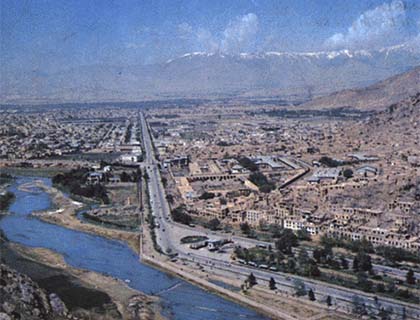Being one of the highly populated city of Afghanistan, what happens in Kabul has a direct connection with various activities across the country, ranging from security-related issues to the economy and even the way we are perceived in the rest of the world. So how does the world see Kabul? Well, on a day-to-day basis what the people of Kabul live through is the murder of innocent civilians and businesses selling adulterated food to customers regardless of the consequences. We see people hanging from buses to reach their workplaces and children struggling to attend school by using public transport which should not be on the road. Kabul appears to us in the midst of a total collapse of governance making life for ordinary citizens a nightmare. The street vendors, the taxi-drivers and the commuters are worried not to be the victims of suicide bombings happening every once in a while in public and crowded places.
Afghanistan is still known as a highly dangerous country – as the U.S. President Barack Obama has recently stated this fact. The civilian casualties have increased across the country. Every day, Afghan people, including women and children, lose their lives in terrorist attacks and suicide bombings. The infiltration of the Islamic States (IS), also known as Daesh, in the country has permeated greater fear among the citizens. Since the emergence of Daesh, mysterious deaths and kidnappings take place. Kabul residents are not exception to such threats. People lose their lives on the streets, shopping malls, markets and schoolchildren are killed on the way to schools. In short, the counterterrorism strategy did not come to fruition in Afghanistan.
Sanitation conditions for the people are far from satisfactory, clean drinking water is a luxury, and electricity is available for only a limited number of the population. These everyday battles make communities vulnerable, sick and tired as they are of their arduous daily routine. The hot weather and mounting pollution lead to critical diseases of the residents. If you walk on a street in Kabul for one hour in summer, what you inhale will be all dust and polluted air.
Kabul was once a relatively lush haven for several hundred thousand residents. But decades of war, migration and chaotic sprawl have turned the Afghan capital into a barely functioning dust bowl. One of the casualties of war has been the infrastructure that supplies the people with a clean water source. However, the war is not the only cause of the crisis. Geographical constrains, climate change, and the lack of education on clean water and sanitation also adds to the problem.
It is no surprise to see that the residents of Kabul city carry water the same as remote areas of Afghanistan. A considerable number of the residents, especially those who live on the top of hills, carry water from distant places. This is part of normal life in this populated city.
One of the many reasons for these numbers being so appalling is because their infrastructure has been damaged or destroyed by years of war. From 1992 to 1996 the civil war led to indiscriminate shelling of Kabul and other cities which destroyed the infrastructures. Then in 1996 the Taliban took over, leading to a lull in the violence. However, the Taliban did little to rebuild the infrastructure in Kabul and elsewhere, instead focusing on imposing their radical ideology. In 2001 the Taliban was pushed from power by coalition forces, and Afghanistan has been suffering from militancy carried out by the Taliban’s guerilla.
Driving from the hilltop to the city center highlights another of Kabul’s challenges — traffic. The mostly unpaved streets are choked with five to 10 times the number of cars they were designed to handle. On top of that, vendors, beggars, pedestrians and bike-riders all compete for space. It can take hours to cross from one side of Kabul to the other.
The increase in street beggars, most of them women and children, is also a considerable challenge in Kabul city. If you walk on streets, you will see a number of beggars queuing and some are imploring the passersby for an Afghan to survive hunger. It seems that their numbers increase with each passing day in the summer season. What touches me more is the scene of younger children who are deprived of going to school and wander the streets for a piece of bread from dawn to dusk. Their future will be pitch dark and they will suffer their whole life for getting bread and butter.
Street crimes aggravate the problems further. People are mugged even in public places, their rights to life and properties are robbed and they are preyed upon on the streets. Moreover, the persistent hunger forces the addicts to break into houses and steal things to survive hunger.
Hence, people – particularly in the populated city of Kabul – are in the grip of various challenges and insecurity, poverty, unemployment, lack of facilities and sanitation and street crimes are the most important problems to be addressed. Unfortunately, these problems have been aggravated in recent months and have changed into a matter of great worry for the citizens. In short, the social and individual pains and sufferings have left people in a state of despondency.
One way to gain back public trust would be to immediately initiate some large public interest projects in Kabul such as a big health project, access to electricity and clean water and establishing good traffic system. Hope these challenges be considered in near future.

